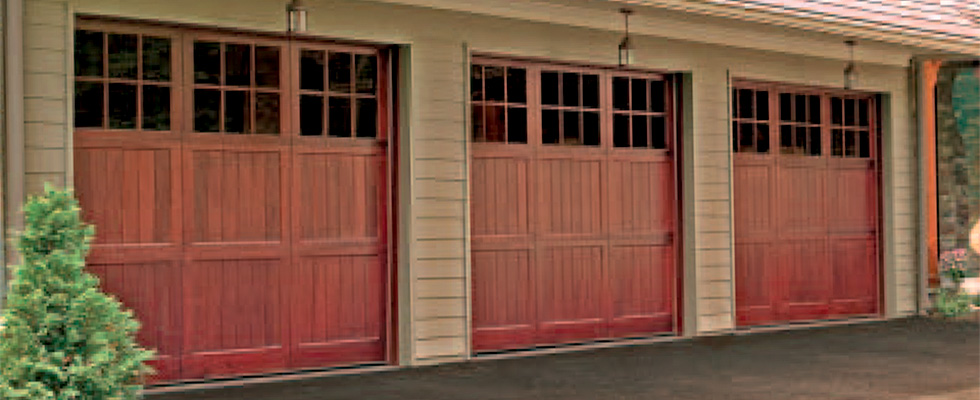Rust mars the beauty of your garage door. It also compromises the door’s ability to keep dirt and moisture out of your garage. So it’s best to attack garage door rust as soon as you discover it.
First, inspect your door carefully for rust. While it can crop up anywhere, it’s likely to appear first on the bottom panel. Not only does this section experience the most wear and tear, but moisture – a breeder of rust – accumulates there. Some homeowners opt to replace a rusty bottom panel, but it’s not necessary.
We’ve listed two repair-and-replace options when rust occurs. Choosing which one is right for you depends mainly on how much time and money you’re willing to devote to the project.
Method 1: Repair/Repaint Just The Rust Spots
The quicker and less expensive option is to repair and repaint only the rusted areas on the door. You will need:
Warm water
Grease-fighting dishwashing liquid
A cloth or sponge
White vinegar
Steel wool pad
Palm sander
Zinc-chromate primer
Paintbrush
Rust-resistant paint
First, clean the entire door with the water and dishwashing liquid. Rinse and allow to dry.
Soak the cloth in white vinegar and wipe all rusted areas. The vinegar reacts with the rust and dissolves it. Rub rust away with the steel wool pad and wipe clean with the vinegar. Repeat this process until all rust is removed and the metal is clean.
Sand the rusted spots and a two-inch perimeter around them. Use the paintbrush to coat these areas with the primer. Once the primer is dry, paint the primed areas.
Method 2: Repair/Repaint The Entire Door
This approach is more involved and time-consuming. However, many homeowners go this route because it offers more assurance that rust won’t return. Here are the materials you need:
Scraper Electric sander
Fine-grit sandpaper
Medium-grit sandpaper
Coarse-grit sandpaper
Putty knife
Auto body filler
Warm water
Trisodium Phosphate (TSP)
Cloth or sponge
Water hose
Drop cloths
Painter’s tape
Masking paper
Paint sprayer Rust-inhibiting primer
Paint Bucket
- Scrape away paint flakes caused by the rust. Using the sander and coarse-grit sandpaper, sand the entire door. For corners and other spaces the sander won’t reach, use just a sheet of the coarse-grit.
- Remove the coarse-grit paper from the sander and replace it with medium-grit. Sand the entire door again to smooth over any rough surfaces. As you sand, check closely for dents or small holes caused by the rust. When finished sanding, repair those imperfections by using the putty knife and auto body filler. (Do not use spackle or wood filler. These materials will not adhere to the door.) After the filler has dried, use fine-grit paper on the sander to smooth out the repairs.
- Mix the TSP and warm water in the bucket, making sure to follow the instructions on the bottle. Soak the cloth or sponge in the solution to clean the entire door. Use the water hose to thoroughly rinse the door before letting it dry completely.
- Place drop cloths on the ground, then spread masking paper over the door’s window panes and walls around the door. Secure the paper with painter’s tape, which you can also use to protect the garage door handles.
- Pour primer into the paint sprayer. Apply a coat of primer to the door, moving the sprayer back and forth and always keeping it about a foot away from the door’s surface. Let the primer dry for the amount of time suggested on the primer container.
- Clean out the paint sprayer and now fill it with paint. Paint the door using the same motion and distance as you did the primer. Apply a second coat if necessary, but only after the first coat has dried completely.




